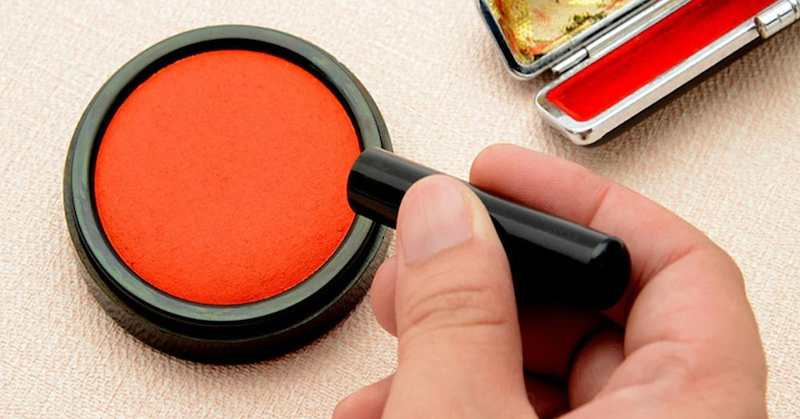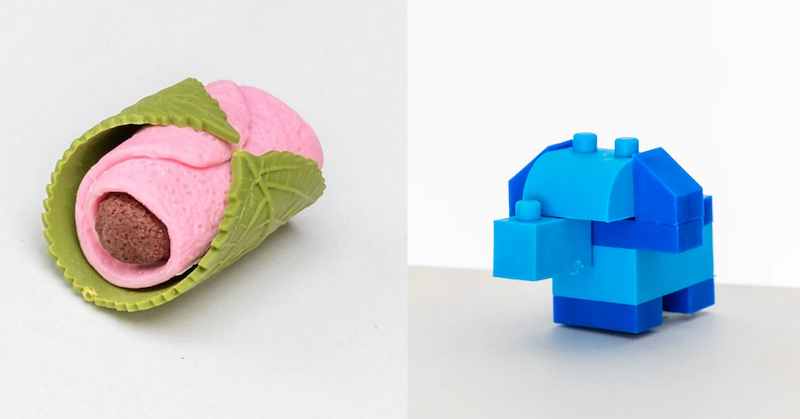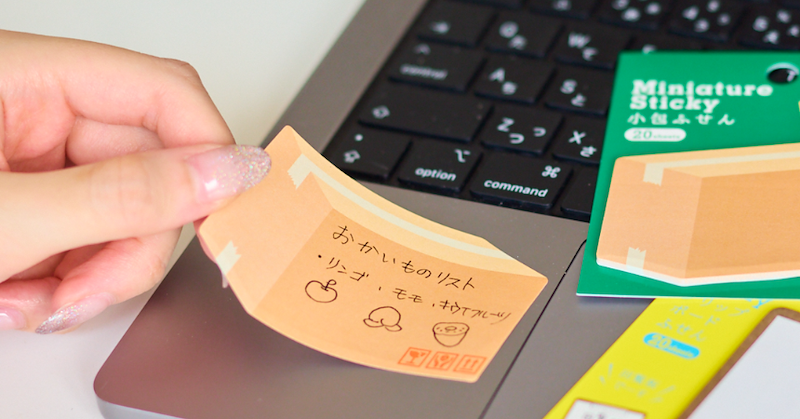
Embracing the Art of Hanko: The Uniqueness of Japanese Personal Seals
Japanese culture is renowned for its rich heritage, beautiful artistry, and unique customs, among which is the profound tradition of Hanko or Inkan, the Japanese personal seals. These seals not only represent individuals' identities but also embody the graceful legacy of a time-honored practice.
What is a Japanese hanko?
A Japanese Hanko, also known as Inkan, is a personal seal that is used in Japan as a form of signature to authenticate documents. It is a small stamp that traditionally features a person's name in Kanji characters, although Katakana is also used, especially for people from abroad. The seal is usually made from materials such as wood, bone, or ivory, and is used with a red ink pad to make an impression on paper.
In the Japanese culture, the Hanko is highly significant. There are different types of Hanko for various purposes, from day-to-day tasks to essential documents like contracts or deeds. Its use is so widespread that it is common to find Hanko not only in professional settings like business or government, but also in personal contexts like art, letters, or books.
This traditional practice has been in existence for centuries and despite the digital revolution, the use of Hanko remains deeply ingrained in Japanese society, demonstrating the blend of tradition and modernity in Japan.

Understanding the Significance of Hanko
In Japanese society, the Hanko is not merely an emblem, but it stands as a symbol of authority and authenticity. From administrative paperwork to personal documents, these seals are used to certify and formalize documents. Essentially, this seal is your signature ank key to all official parts of society.
Each seal has its unique pattern, and the art of designing these seals is an esteemed craft in Japan, with many artists devoting their lives to this delicate and intricate work.
Variations of Hanko: Exploring Different Types
Hanko can be categorized into three main types: Jitsuin, Ginko-in, and Mitome-in, each of them playing a distinctive role.
- Jitsuin: This seal is equivalent to a formal signature, used for essential contracts, deeds, and other significant documents. The Jitsuin is typically registered at the local government office, and its impression is officially recorded.
- Ginko-in: This Hanko is used primarily for bank transactions. The Ginko-in should ideally be different from the Jitsuin to prevent misuse.
- Mitome-in: This is the most commonly used seal, serving for day-to-day tasks such as receiving parcels or signing internal company documents.

What are the rules for a hanko?
There are not too many official rules when it comes to using Hanko, except for signing and authenticating official documents such as tax forms, housing loans, and bank papers. However, the below guidelines may be useful to keep in mind when making and keeping your hanko
- Hanko Design and Size: The design typically consists of the individual's name. It must be unique and legibly stamped. The size, often around 1.5 cm in diameter and 6 cm long, can vary according to purpose.
- Using a Hanko: Place the seal carefully over the designated area and press firmly to ensure a clear impression. Always keep the Hanko and red ink pad clean.
- Storage and Security: Hanko should be stored securely to prevent damage or misuse. Jitsuin, the most official seal, is often kept locked away. Handle Hanko with clean hands to prevent contamination.
- Registration of Hanko: The Jitsuin must be registered at the local government office. Upon registration, the owner receives a certificate called Inkan Shomeisho.
- Hanko Etiquette: Hanko represents one's identity and authority and should be treated with respect. It's inappropriate and could lead to legal consequences to use someone else's Hanko without explicit permission.
Why do Japanese people use hanko?
Japanese people use Hanko, or personal seals, due to several key reasons rooted in their history, tradition, and legal system:
- Historical Significance: The tradition of using Hanko dates back centuries in Japan. It was initially used by nobles and samurai before becoming a common practice among the populace. It's deeply ingrained in Japanese culture and history.
- Identity Verification: The Hanko acts as a form of signature for the Japanese. Each Hanko is unique, allowing it to serve as a reliable form of personal identification when signing documents or making transactions.
- Legal Recognition: In Japan's legal system, many official documents require a Hanko stamp for validation. This includes contracts, marriage registrations, property deeds, and other crucial documents. Certain types of Hanko, like the Jitsuin, are registered with the local government office to further affirm their legitimacy.
- Cultural Aesthetics: Hanko often bear aesthetically pleasing designs and calligraphy. Their use can be seen as a way to preserve and continue the appreciation of traditional Japanese art and craftsmanship.
- Societal Norm: Using a Hanko is a societal norm in Japan. Whether it's for acknowledging receipt of a package, signing internal company documents, or certifying artwork, the Hanko is an integral part of Japanese life.
These factors together underline why the use of Hanko remains prevalent among Japanese people, even in an era of increasing digitalization.
Craftsmanship of Hanko: Delving into the Making Process
Creating a Hanko requires a blend of artistry, precision, and expertise. Here are the crucial steps involved in the crafting of these unique seals:
- Designing: The craftsman begins by sketching the name or characters to be etched onto the seal.
- Carving: The design is then engraved into the material with a special knife, a process that requires exceptional skill and a steady hand.
- Polishing: After the carving is completed, the seal is polished to a smooth finish.
- Testing: The final step involves testing the Hanko to ensure that the characters are correctly formed and can be clearly imprinted.

Purchasing a Hanko: A Guide to Getting Your Personal Seal
In Japan, Hanko can be purchased from specialty shops or online platforms. Prices may vary based on the material and complexity of the design, ranging from a few thousand yen for basic designs to several tens of thousands for more intricate and custom-made seals.
Can foreigners have a hanko?
Yes, foreigners residing in Japan can indeed have a Hanko. It is quite common for foreigners to have their names transliterated into Katakana for the purpose of creating a Hanko. It can be used in a variety of settings such as opening a bank account, signing contracts, or receiving packages.
Foreigners can obtain a Hanko from specialty shops or online platforms. When purchasing a Hanko, one may choose from ready-made options or order a custom-made seal. After obtaining a Hanko, if it is a Jitsuin, it needs to be registered at the local government office for it to be legally recognized.
It's worth noting that while Hanko are deeply embedded in Japanese culture, as a foreigner, you may also use a signature in some circumstances, although this could depend on the specific situation or organization you're dealing with.
Where can you buy a hanko as a foreigner?
Foreigners in Japan can purchase a Hanko from a variety of sources:
- Hanko Shops: Traditional Hanko shops can be found in many towns and cities across Japan. They offer a wide range of options, and the shop staff will help you select and customize your Hanko.
- Online Retailers: Several online platforms sell Hanko to both local and international customers. Websites like Hankoya.com offer a variety of options, and they can ship internationally.
- Department Stores: Larger department stores in Japan often have a section dedicated to Hanko, where you can choose from a range of ready-made seals or order a custom-made one.
- Stationery Stores: Certain stationery stores in Japan also sell basic Hanko, often at a lower price.
Before purchasing a Hanko, foreigners should decide what they want the seal to represent. It's common to have one's name transliterated into Katakana for the Hanko design. Remember to ensure that your chosen Hanko design is acceptable for the intended use, as different types of Hanko are used for different purposes.

Do foreigners need hanko in Japan?
While not absolutely necessary for every situation, having a Hanko can certainly make certain aspects of life in Japan easier for foreigners. The need for a Hanko largely depends on the nature and duration of a foreigner's stay in the country.
For long-term residents, a Hanko can be beneficial in several scenarios:
- Banking: Some banks require a Hanko to open a bank account.
- Employment: Certain companies might ask for a Hanko for internal documents and procedures.
- Legal Documents: When dealing with certain legal documents such as contracts or property deeds, a Hanko may be required.
However, Japan is increasingly accepting signatures in place of a Hanko in many scenarios, and certain services like online banking and digital signatures are becoming more commonplace.
In contrast, short-term visitors or tourists are unlikely to need a Hanko during their stay in Japan.
As regulations and acceptance can vary by institution and region, it's recommended to check specific requirements when planning to live, work, or conduct business in Japan.
The Future of Hanko: Tradition Meets Technology
Despite the digital advancements, the Hanko continues to hold its significance in Japan, blending seamlessly with the technological era. Digital Hanko is gaining acceptance, ensuring the continuity of this centuries-old tradition. That said, signatures have also become commonplace, as there is a growing number of people in Japan opposing the continued use of hanko. If the tradition will adapt and evolve or be left to history is a question reserved for the future.
Do Japanese people still use Hanko?
In conclusion, the Hanko stands as a unique testament to Japan's rich cultural heritage, a mix of art, tradition, and personal identity. Its usage extends beyond mere functionality, reflecting the Japanese penchant for harmony, respect, and authenticity. Embracing the Hanko is embracing an integral part of the Japanese way of life. Thre are also those opposed to the continued use of hanko, but as for now, hanko is here to stay.
We don't have hankos in our box, but we have a lot of original stationery from Japan! Check it out.


